|
Wayne
Works During World War Two
Richmond, IN
1888-1956
This page updated 11-18-2022.
Wayne Works was a company in Richmond, IN that
produced 26,002 ambulance bodies for the U.S. Army Medical Corps in
World War Two. The company had multiple name changes, before and
after the time it was Wayne Works with various owners and corporate
marriages and divorces. The company's roots actually go back to
1837 in nearby Dublin, IN when the Witt family built a foundry. In
1956 new ownership merged Wayne Works with Divco. During its later
years, the various companies specialized in school bus bodies.
Finally, in 1992, the Richmond Transportation Corporation filed for
bankruptcy and the many iterations of Wayne Works came to an end.
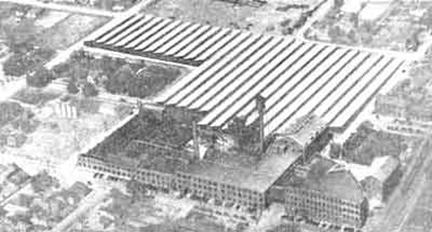
This 1939 aerial photo of the Richmond, IN
Wayne Works shows the plant as it was during World War Two. This
is looking to the northeast.
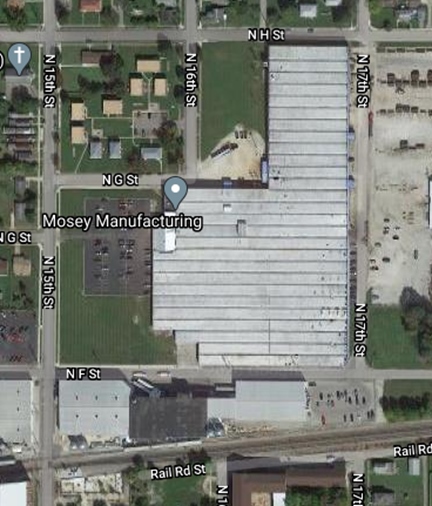
Some of the World War Two era plant still
exists and currently is the home of Mosey Manufacturing. Wayne
Works in Richmond, IN ran south to north from North F Street to North H
Street. The eastern boundary was North 17th Street. The
western boundary was North 15th Street. In 1967 Wayne Works moved
its manufacturing from this location to a new 550,000 square foot plant
west of Richmond, on the south side of I-70. Today it is a
business park. Image courtesy of Google Maps.
Wayne Works World
War
Two Production:
Wayne Works was the exclusive supplier of the bodies for 39,742 Dodge WC
series 1/2-Ton 4x4 and 3/4-ton 4x4 Army Medical Corps field ambulances.
These ambulances were used by the U.S. Army during World War Two.
It was these types of ambulances that moved wounded soldiers from the
battlefield to the field hospitals. They were the go-to ambulances of the Army during
World War Two. These were all produced under sub contract to the
Dodge Division of Chrysler Corporation.
The company also
produced several other types of truck bodies for the war effort.
Wayne Works manufactured 1,1912 small arms repair bodies that were
mounted to GMC 2-1/2-ton 6x6 trucks. This was a sub contract from
GMC.
It also produced 1,500 K-60 van bodies for the U.S. Signal Corps that
also were mounted on GMC 2-1/2-ton 6x6 trucks. This was a prime
contract from Radar Industries.
The body was used to house SCR-268, SCR-527, an SCR-545 types of radar
electronics.
Hercules-Campbell Body
sub contracted to Wayne Works for the manufacture of 200 bus bodies for the
war effort.
Under prime contracts from the U.S. Army, Wayne Works produced 500 bus bodies
for the Army. According to Table 2, these were produced under two
different contracts. Table 2 shows that contract number
294-ORD-2266 was for 100 units. Table 1 shows that this contract's
value was $125,000 resulting in a unit cost of $1,250 each. Table
2 shows that 400 bodies were built for the U.S. Army under contract
33008-ORD-147 for $459,000 resulting in a unit cost of $1,148.
400 bus bodies for the Navy were produced under contact NXS-27834.
This $496,000 contract resulted in a $1,240 unit cost.
Table 1 indicates that
Wayne Works also produced a number of buses for the Treasury Department
in 1942. The Treasury Department was responsible during World War
Two for ordering equipment for China as it was not included in
Lend-Lease. These bus bodies may very well have ended up
transporting Chinese troops during World War Two. Using an
estimated cost of $1,250, about 160 units were produced.
Table 1 - Wayne Work's Major
World War Two Contracts
The information below
comes from the "Alphabetical Listing of Major War Supply
Contracts, June 1940 through September 1945." This was
published by the Civilian Production Administration,
Industrial Statistics Division. |
|
Product - Customer |
Contract Number |
Contract Amount |
Contract Awarded
|
Completion
Date |
| Bus Bodies -
Treasury |
TPS- 6931L |
$200,000 |
5-1942 |
9-1942 |
| Motor Bus Bodies
- Army Ordnance |
294-ORD-2266 |
$125,000 |
6-1943 |
8-1943 |
| Bus Bodies - Navy |
NXS-27934 |
$496,000 |
6-1943 |
10-1943 |
| Bus Bodies - Army
Ordnance |
33008-ORD-147 |
$459,000 |
10-1943 |
3-1944 |
| Total |
|
$1,280,000 |
|
|
|
Table 1A -
Wayne Work's
World War Two Busses Accepted by Detroit Ordnance, US Army
The information below comes from "Summary Report of
Acceptances, Tank-Automotive Material, 1940-1945"
Published by Army Services Forces, Office, Chief of
Ordnance-Detroit, Production Division, Requirements and
Progress Branch
January 21, 1946. |
|
Type |
Contract Number |
1943 |
1944 |
1945 |
Total |
| Truck, 1-1/2 Ton,
4x2 Bus 29-Passenger |
294-ORD-2266 |
100 |
|
|
100 |
| Truck, 1-1/2 Ton,
4x2 Bus 29-Passenger |
33008-ORD-147 |
|
400 |
|
400 |
| Truck, 1-1/2 Ton,
4x2 Bus 29-Passenger |
761-ORD-2655 |
18 |
|
|
18 |
| Total |
|
118 |
400 |
|
518 |
Using the information from
Tables 1 and 1A the unit cost of each bus can be determined. For
Contract 294-ORD-2266, $125,000 divided by 100 equals $1,250. For
contract 33008-ORD-147, $459,000 divided by 400 equals $1,147.50.
For contract 761-ORD-2655, there is not enough information to calculate
the unit cost, but it can be estimated as approximately $1,200.
Table 2 - Wayne Works
World War Two Document listing its Prime and Sub Contracts
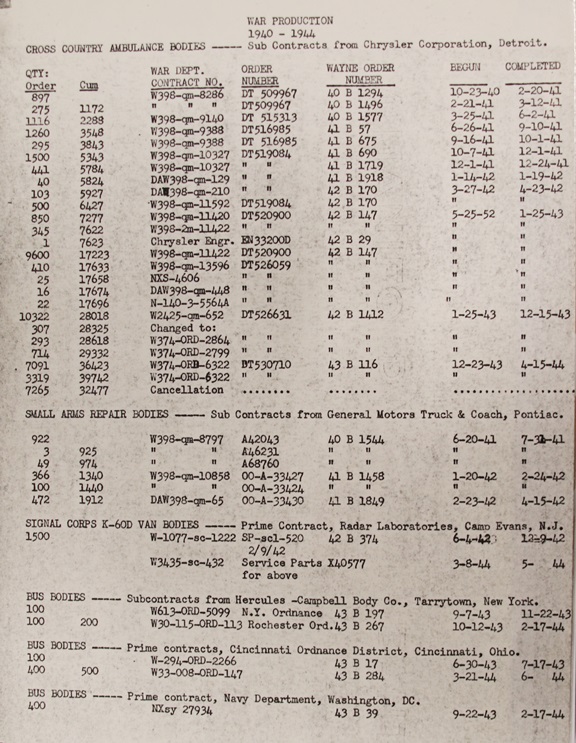
This document is courtesy of the Museum of
the Soldier in Portland, IN was added 11-18-2022.
Table 2 shows that through sub contract
W374-ORD-6322 Wayne Works produced 39,742 ambulance bodies. There
is one more entry below that for a cancelled contract for 7,265 units
with an accumulated amount of 32,477, which is less than the previous
amount. In looking at this, 7,265 was subtracted from 39,742 to
give a result of 32,477. I am not sure why this was done as 39,742
were built when contract W374-ORD-6322 was completed. The person
doing the work should not have subtracted the 7,265.
All American World War Two Dodge WC-9, WC-27,
and WC-54 ambulances came equipped with Wayne Works bodies.
Wayne Works built the bodies, which were then shipped to the Dodge Mound
Road plant in Detroit, MI, which mounted them onto the WC chassis.
Table 3 shows that 35,934 WC series ambulances
were accepted. Comparing this figure to the 39,742 bodies built,
it appears that there was an overbuild of 3,808 bodies. This was
many years before the concept of just-in-time inventories was developed.
|
Table 3 -
Dodge WC-9, WC-18, WC-27, and WC-54
World War Two Trucks Accepted by Detroit Ordnance, US Army
The information below comes from "Summary Report of
Acceptances, Tank-Automotive Material, 1940-1945"
Published by Army Services Forces, Office, Chief of
Ordnance-Detroit, Production Division, Requirements and
Progress Branch
January 21, 1946. |
|
Type |
1940 |
1941 |
1942 |
1943 |
1944 |
1945 |
Total |
Comments |
|
WC-9, WC-18 and WC-27, Truck, 1/2, 4x4
Ambulance |
2 |
5,317 |
1,103 |
|
|
|
6,422 |
|
| WC-54, Truck, 3/4, 4x4
Ambulance |
|
|
9,899 |
13,156 |
2,947 |
3,500 |
29,502 |
293 units went to
the U.S. Navy |
|
Total |
2 |
5,317 |
11,002 |
13,156 |
2,947 |
3,500 |
35,924 |
|
The WC-series ambulance is one of the most overlooked but most important vehicles the U.S.
Army had during World War Two. If a soldier was wounded in combat,
a WC series ambulance was his life-line off the battle field to a field hospital.
It was the very important link that quickly got the wounded out
of harm's way to needed medical attention. Wayne Works of
Richmond, IN produced the bodies for one of the most important American vehicles of
World War Two.
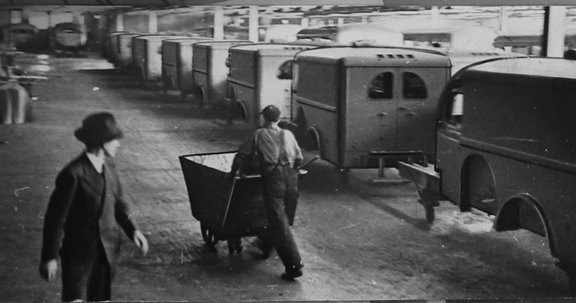
Ambulance bodies come down the production
line at the Wayne Works, IN Richmond plant. This image is courtesy
of the Museum of the Soldier in Portland, IN was added 11-18-2022.
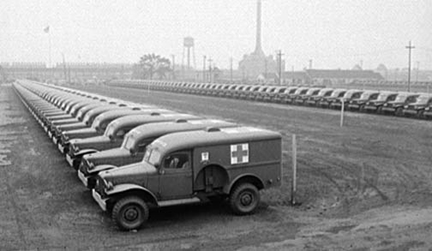
WC-54 Army tactical ambulances are awaiting
spare tires before shipment at the Dodge Mound Road plant in Detroit,
MI.
The Dodge WC-9 Truck Chassis with a Wayne
Works Ambulance Body:
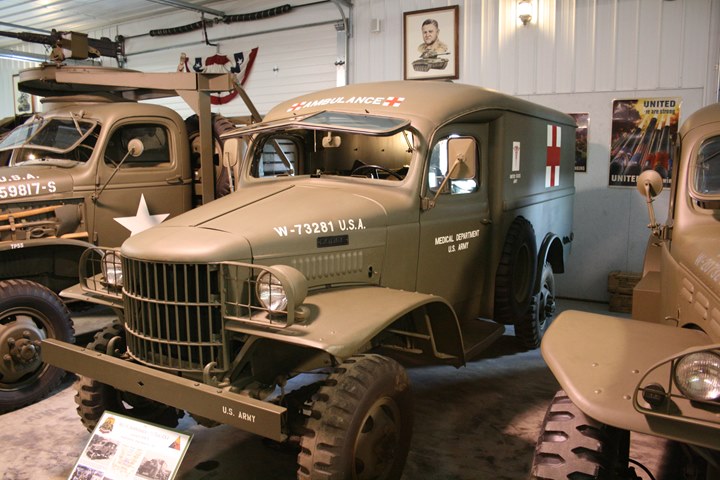
This WC-9 1/2-ton 4x4 field ambulance was part of the former Ropkey
Armor collection. Author's photo added 10-1-2021.
The Dodge WC-27 Truck Chassis with a Wayne
Works Ambulance Body:
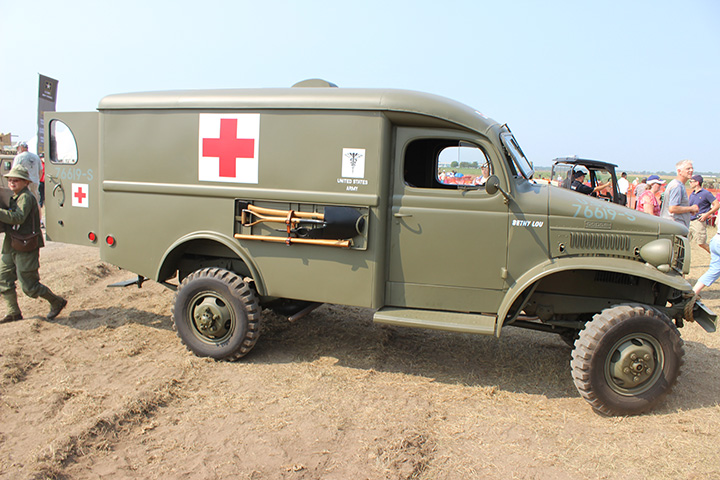
This WC-27 ambulance was one of 2,579 built in 1941 and 1942. This
particular unit was produced in 1941. Author's photo added 10-1-2021.
The Dodge WC-54 Truck Chassis with a Wayne
Works Ambulance Body:
Note in the photos below that the Red Crosses
are different on the vehicles. There were several different
regulations for markings on the WC-54 during World War Two. The
presence or absence of stars or stars in circles was largely determined
by the theater of operations the WC-54 was in.
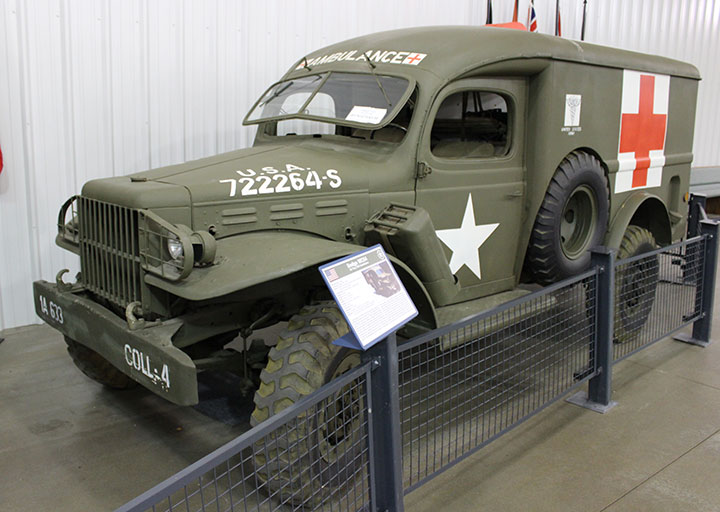
This WC-54 was on display at the former
Victory Museum in Auburn, IN. The chassis arrived at Wayne Works
with front grill, hood, fenders, doors, and windshield all attached.
Wayne Works installed everything behind that. Author's photo.
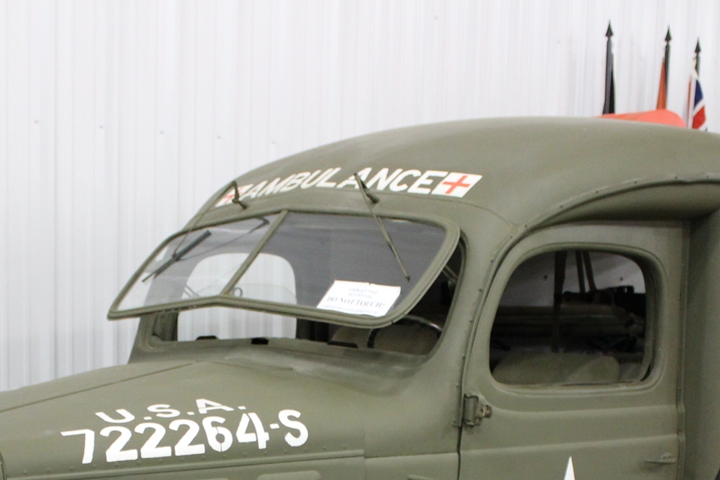
There is a sheet metal seam just below the
word "Ambulance." This was the separation point between the Dodge
and Wayne Work portions of the vehicle. Author's photo.
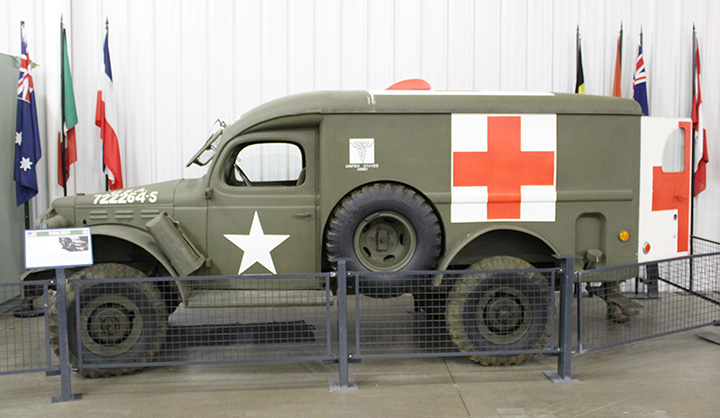
Author's photo.
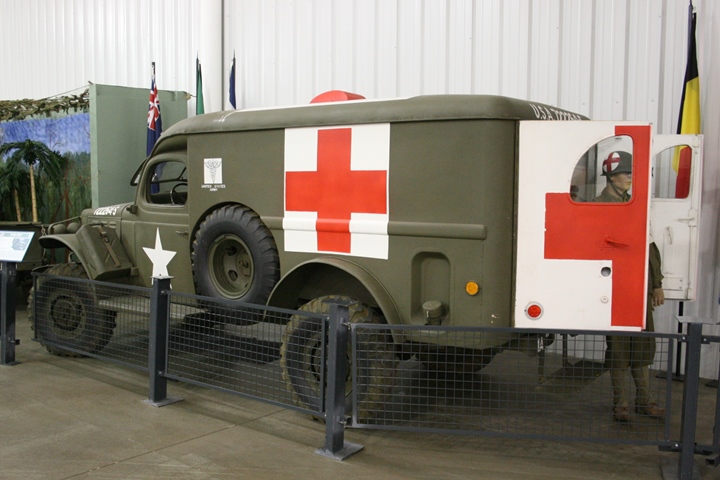
Author's photo.
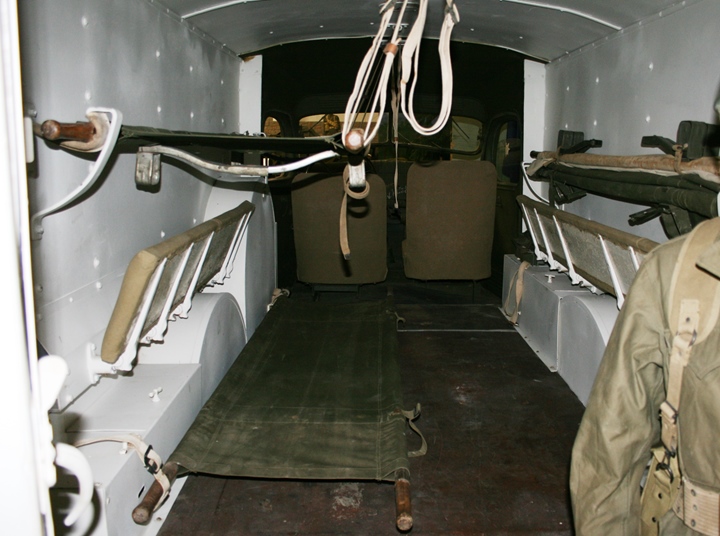
The body had three inches of insulation
covered with Masonite. There were fold-down benches to seat six
soldiers. It could also be configured for four litter patients.
There was a vent fan in the roof for ventilation and a heater to keep
wounded soldier warm in cold weather. Author's photo.
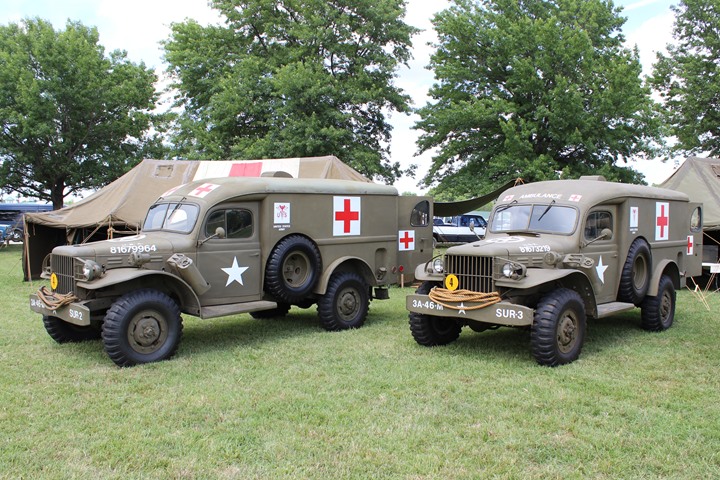
These two WC-54s were on display at the 2014 MVPA National Convention in
Louisville, KY. Author's photo.
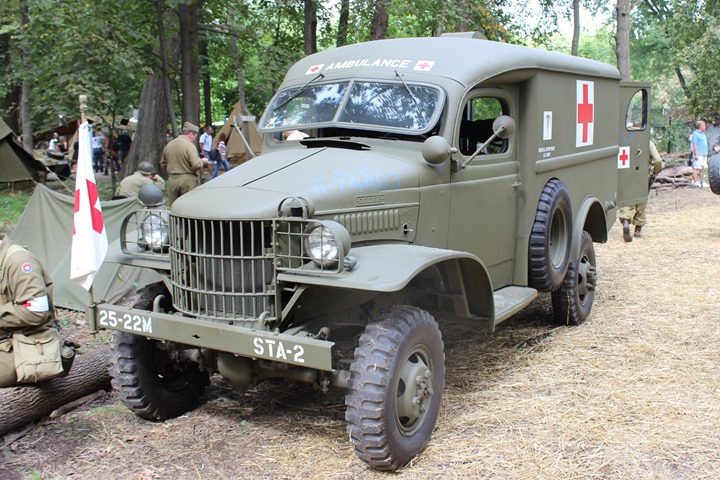
This WC-54 was on display at the 2015
Rockford, IL World War Two encampment. Author's photo.
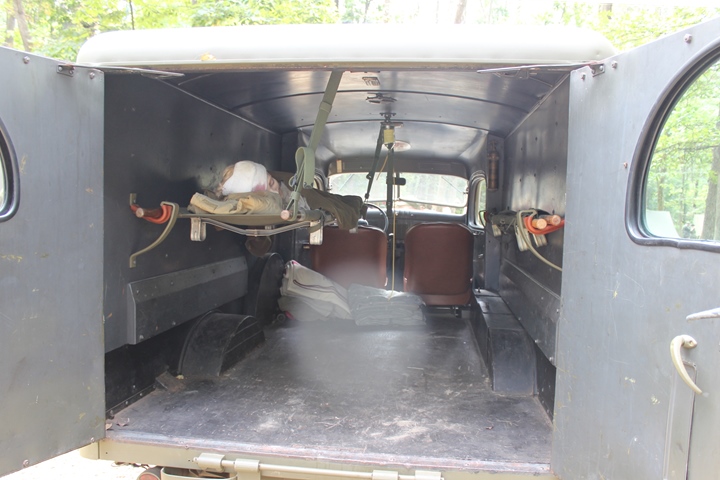
Author's photo.
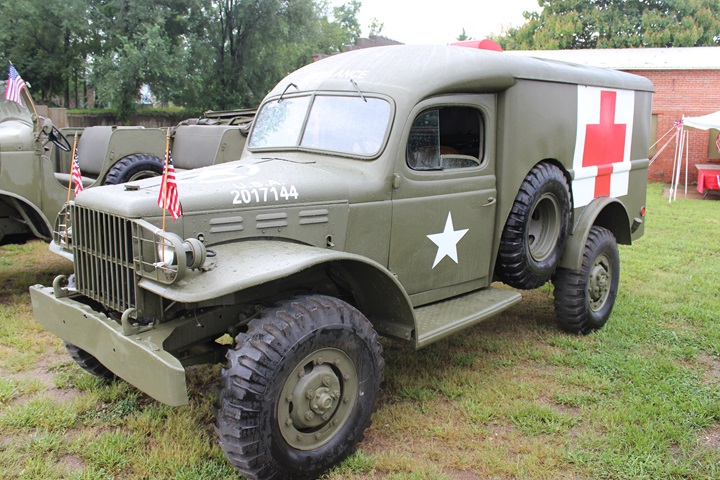
This WC-54 was on display at the Indiana
Military Museum's World War Two History Days in 2014. Author's
photo.
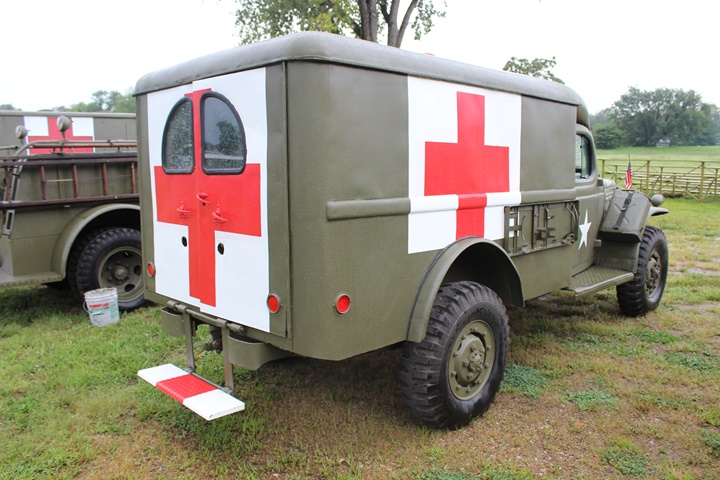
This has the brackets on the right side of vehicle for the pioneer
tools. Author's photo.
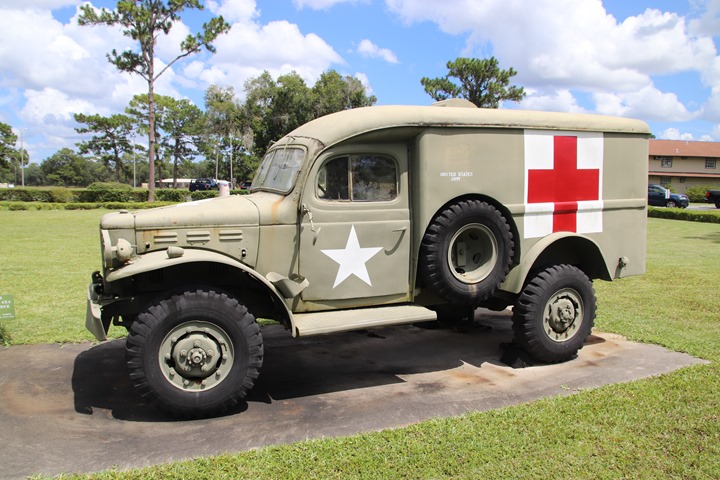
This WC-54 is on display at Camp Blanding,
FL. Author's photo added 11-30-2020.
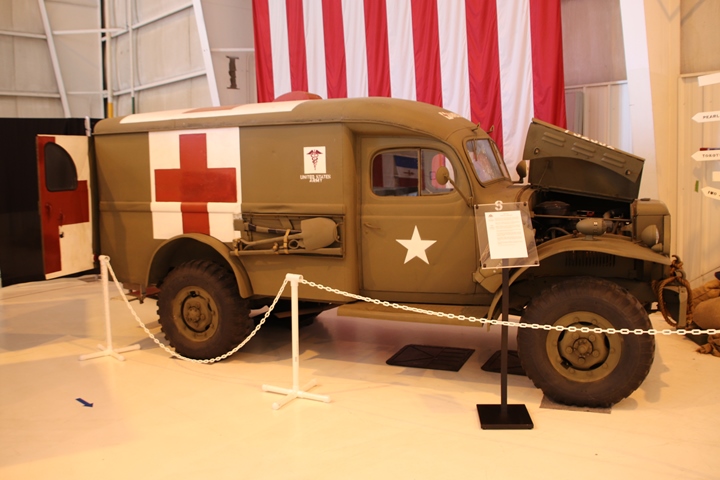
The Evansville Wartime Museum has this WC-54
on display among its many exhibits. Author's photo added
5-23-2021.
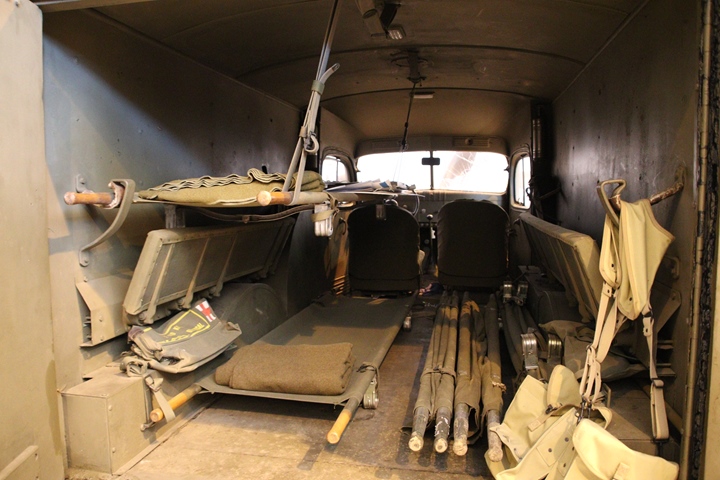
Author's photo added 5-23-2021.
Signal Corps K-60 Van Bodies:
Wayne Works produced 1,500 bodies for use
with SCR-268, SCR-527, and SCR-545 radar units.
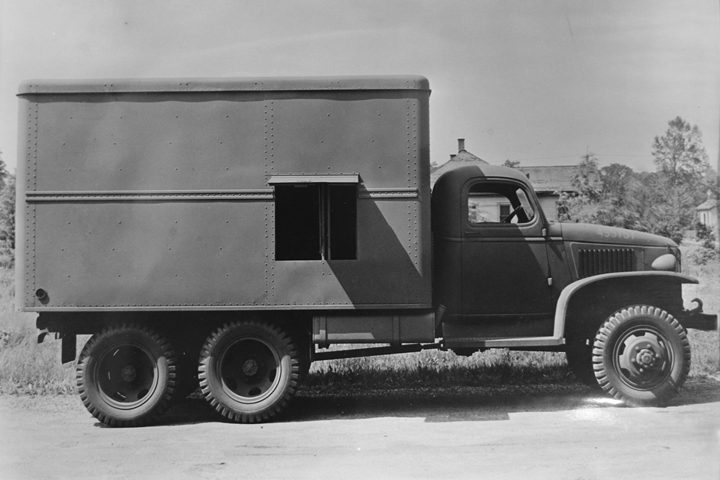
The body was mounted on a GMC 2-1/2-ton 6x6
truck. This image is courtesy of the Museum of the Soldier in
Portland, IN was added 11-18-2022.
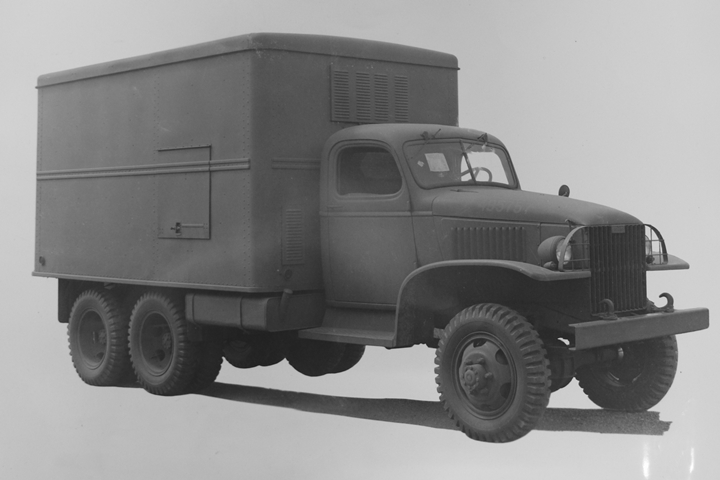
This image is courtesy of the Museum of the
Soldier in Portland, IN was added 11-18-2022.
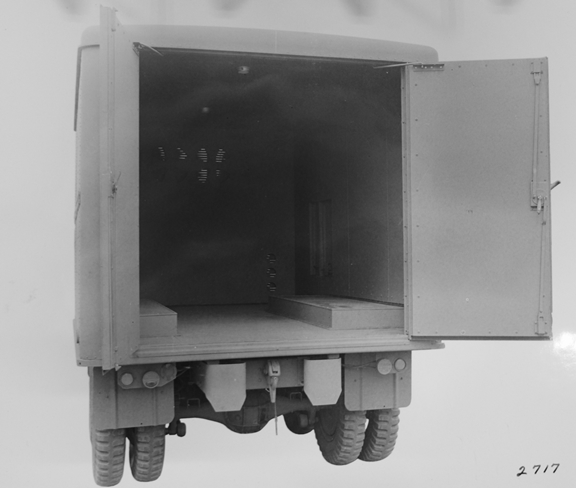
This image is courtesy of the Museum of the
Soldier in Portland, IN was added 11-18-2022.
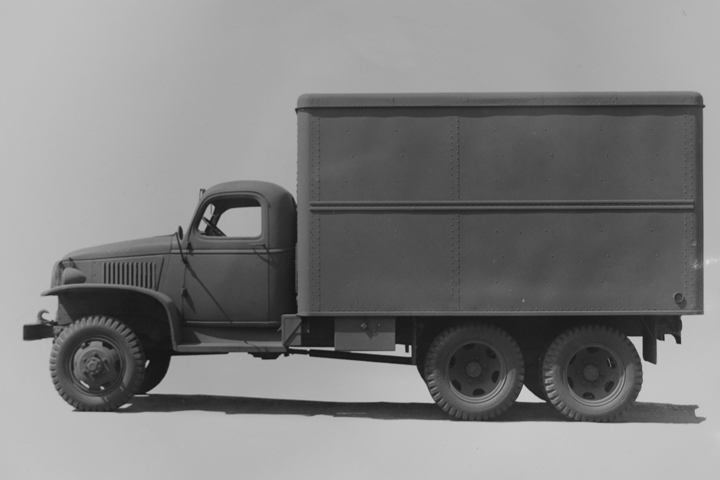
This image is courtesy of the Museum of the
Soldier in Portland, IN was added 11-18-2022.
Navy Busses: Wayne Works built 400 bus bodies for the Navy
that were mounted to International Harvester truck chassis.
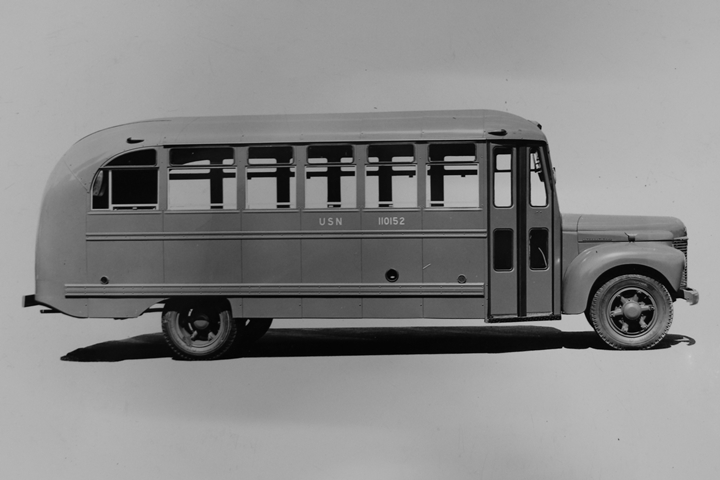
This image is courtesy of the Museum of the
Soldier in Portland, IN was added 11-18-2022.
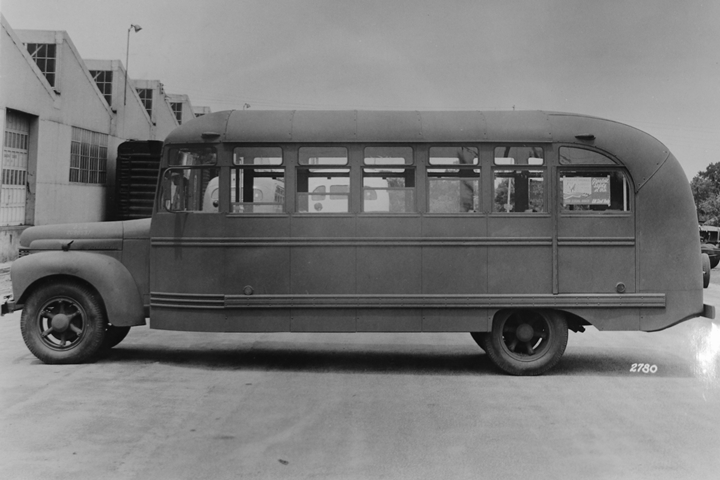
This image is courtesy of the Museum of the
Soldier in Portland, IN was added 11-18-2022.
Army Busses:
Wayne Works built 518 bus bodies for the Army that were mounted to
International Harvester truck chassis.
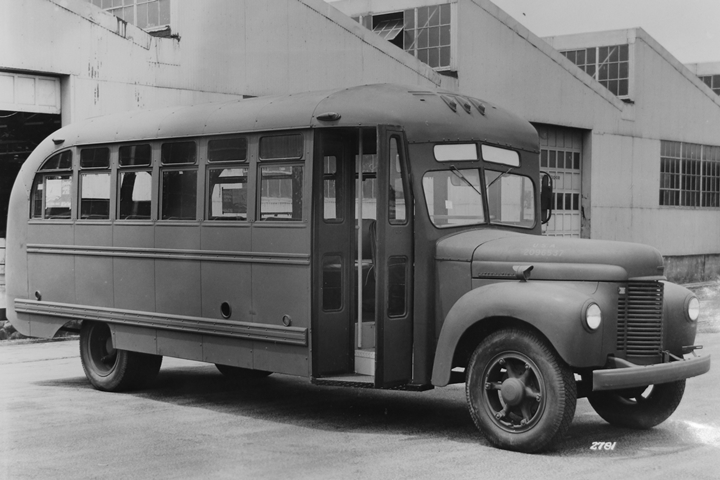
It is hard to read in the photo, but this
bus was U.S. Army registration number 2096537. This image is
courtesy of the Museum of the Soldier in Portland, IN was added
11-18-2022.
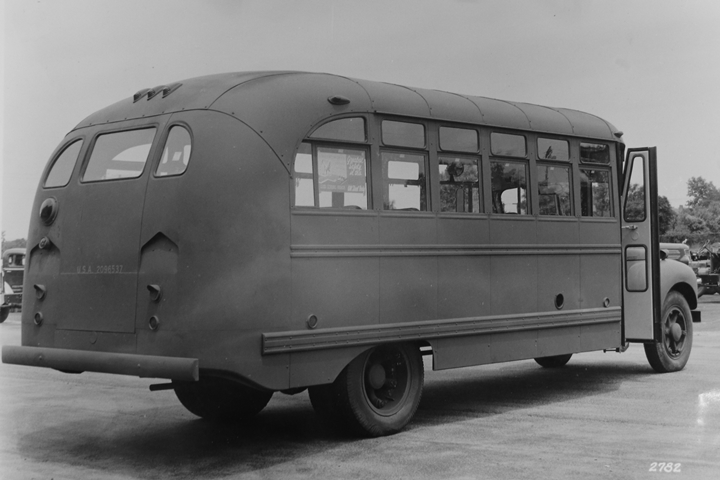
This image is courtesy of the Museum of the
Soldier in Portland, IN was added 11-18-2022.
The former Wayne Works Factory in 2020:

This is the Wayne Works plant in 1939
looking northeast. The multi-story buildings have been razed and
only the single story addition remains today. North 15th Street is
the north-south street on the west side of the multi-story buildings.

This shows the streets referenced below.
Image courtesy of Google Maps.
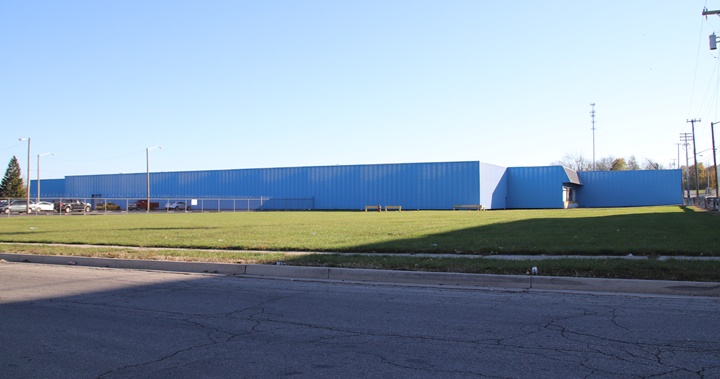
The following series of photos were taken in
early November 2020. This photo was taken on North 15th Street
facing east. The grass area is where the multi-story building used
to stand. The single story building is in the background.
Author's photo added 11-23-2020.
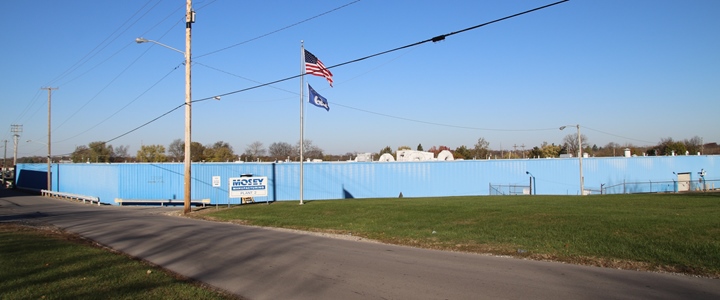
This photo is facing west looking at the
east side of the building. Author's photo added 11-23-2020.
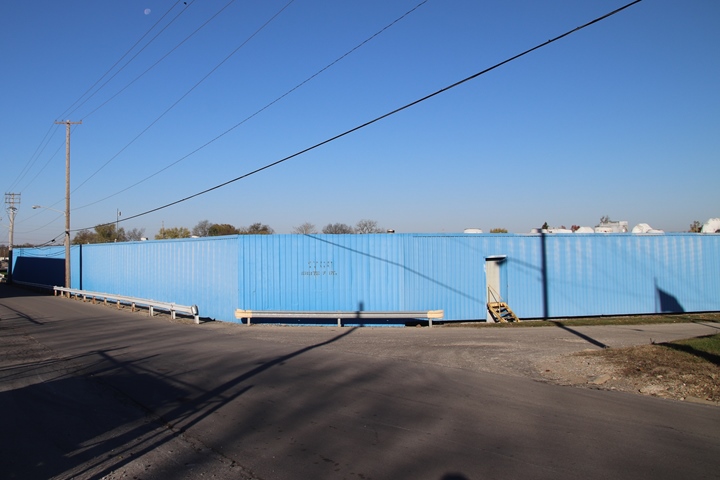
This photo shows the southeast corner of the
building at the intersection of North F and North 17th
Streets. Author's photo added 11-23-2020.
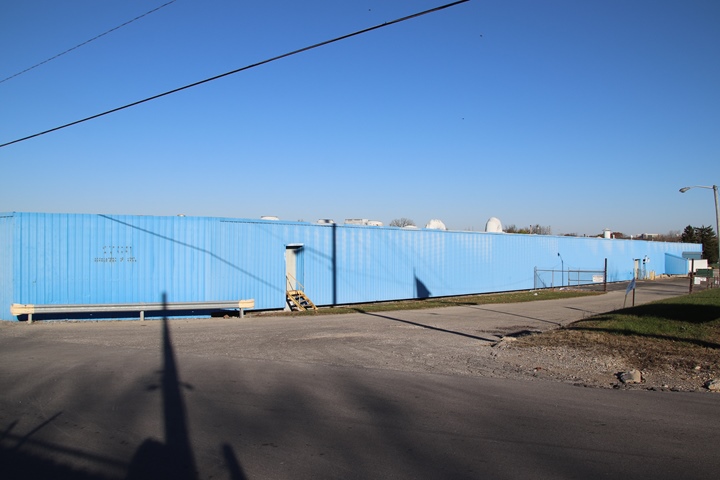
This view shows the long east side of the
building that runs parallel to North 17th Street. Actually, the
street has become a private driveway to the fenced-in area that is now
part of the facility. Author's photo added 11-23-2020.
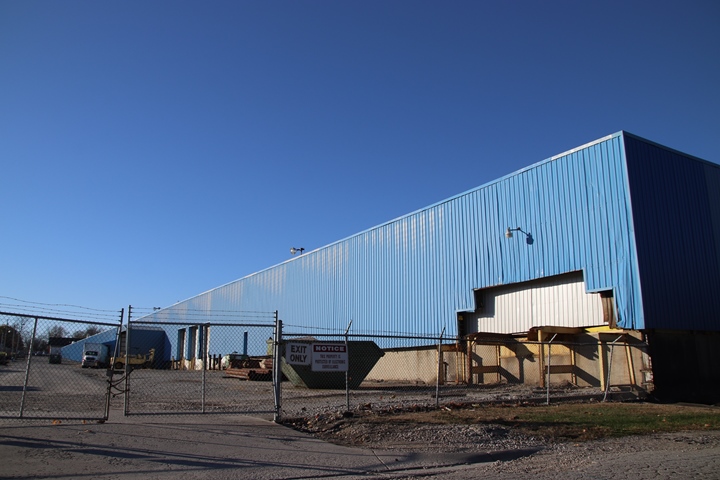
This photo was taken from the north side of
the plant looking south along the east side of the building. What used
to be North 17th Street can be seen behind the gate. Author's
photo added 11-23-2020.
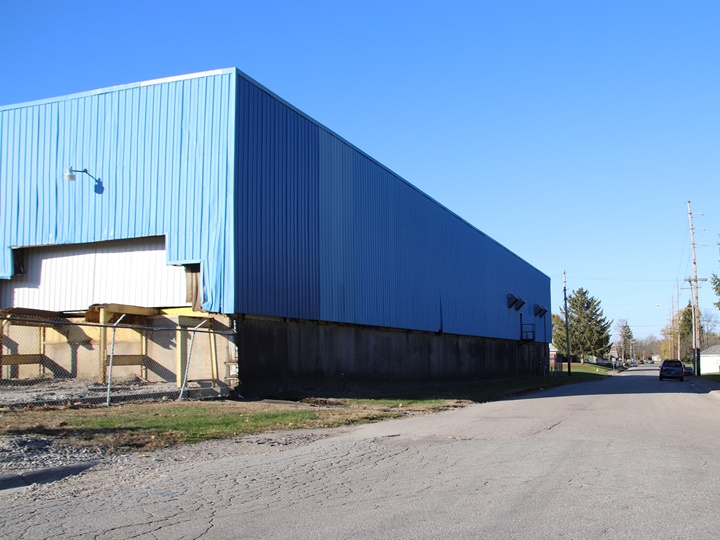
This is the north side of the building along
North H Street. Author's photo added 11-23-2020.
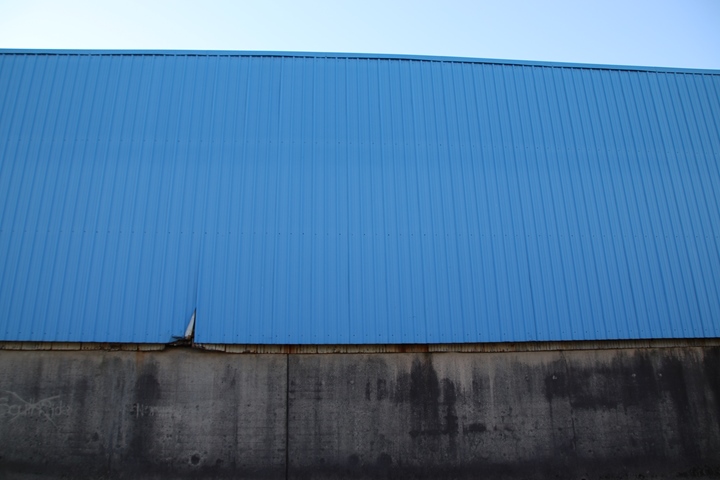
The blue siding is relatively new. An
older sheet metal siding, which may have been the original, can be seen
protruding beneath the new siding. Author's photo added
11-23-2020.
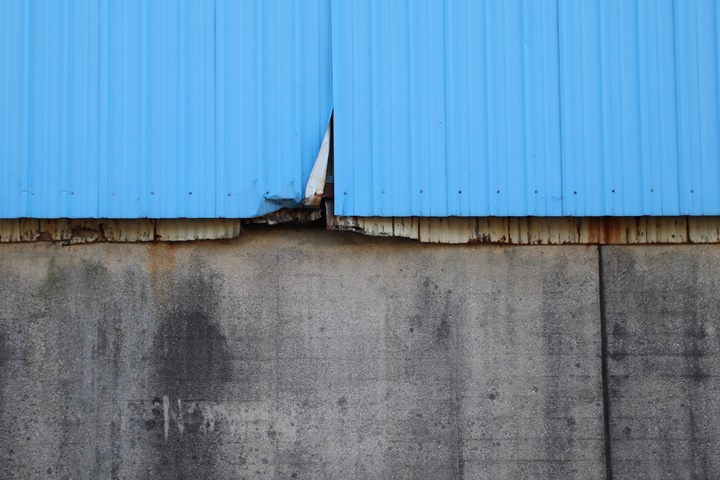
The concrete has been here a long time, as
it is highly aged. Author's photo added 11-23-2020.
The letter below is courtesy of the Museum of
the Soldier in Portland, IN and was added 11-18-2022. Dated July
16, 1943, it was written by a Wayne Works employee to the office of the
Cincinnati, OH Ordnance Department. The letter explains in detail
the work that transpired up to July 1943 at the Wayne Works to help win
World War Two. This is very unique document and I want to thank
the officers of the Museum of the Soldier in Portland, IN for allowing
me access to the photos and this document that they have collected on
this company's endeavors during World War Two.
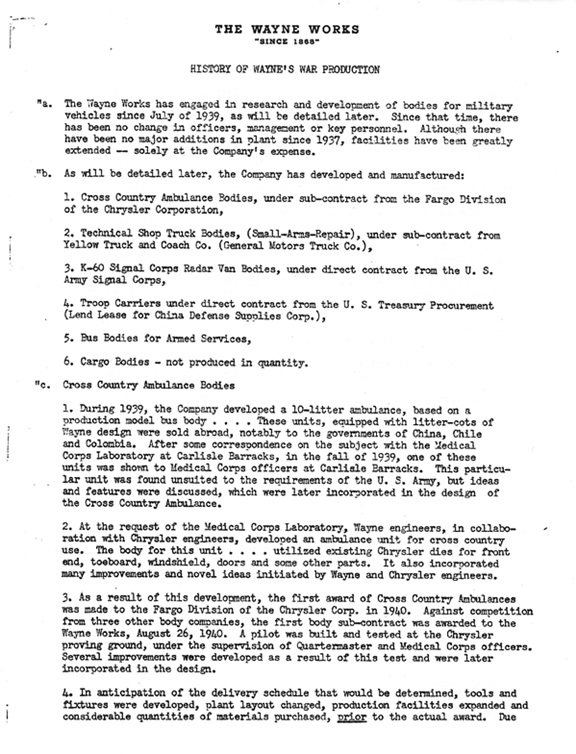
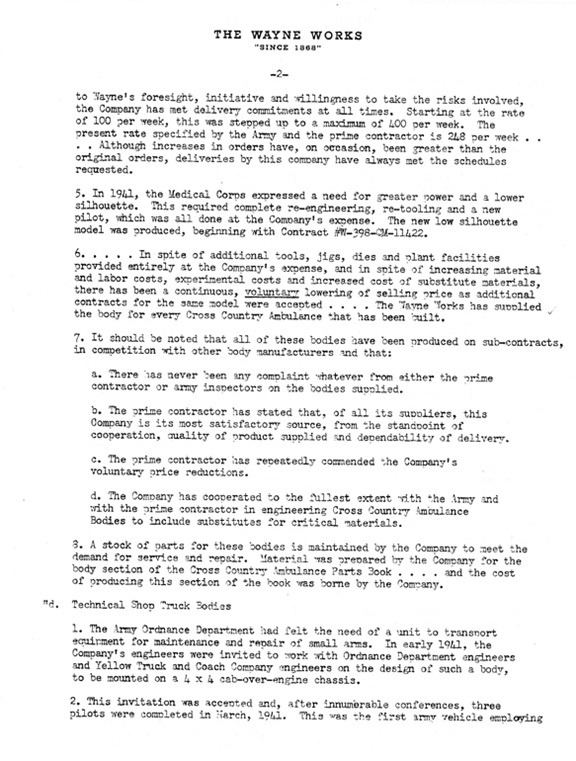
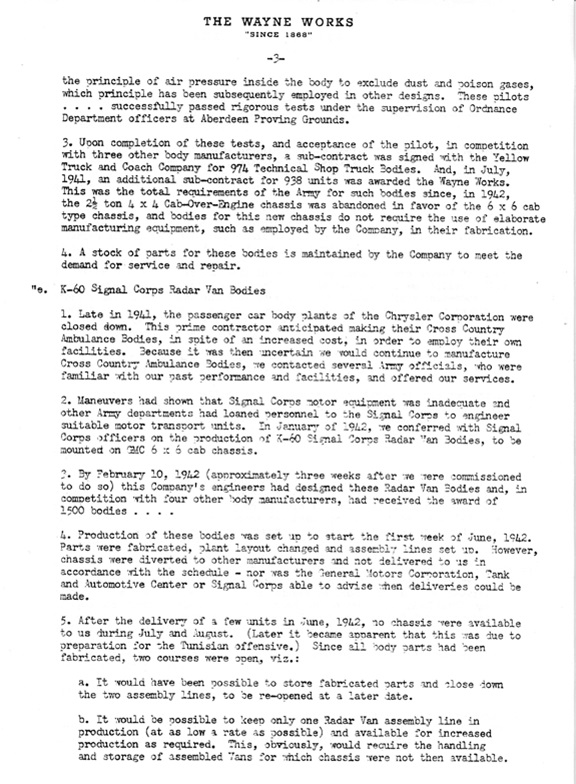
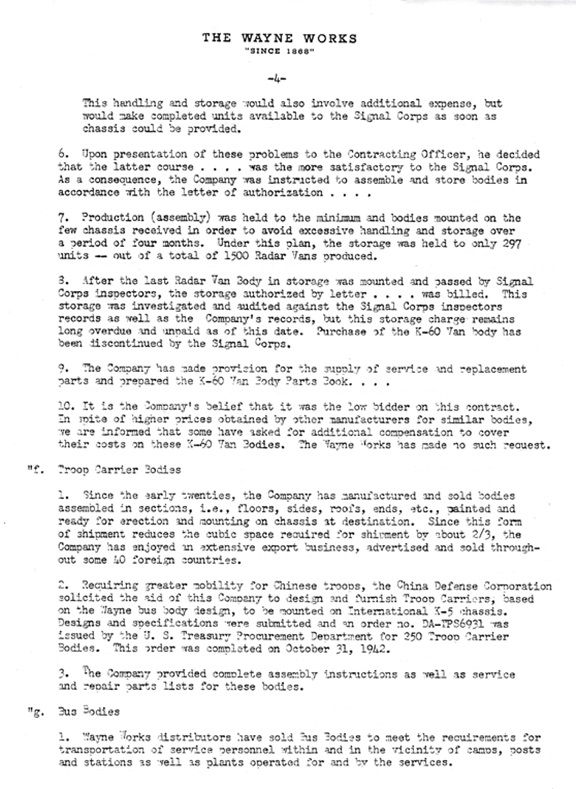
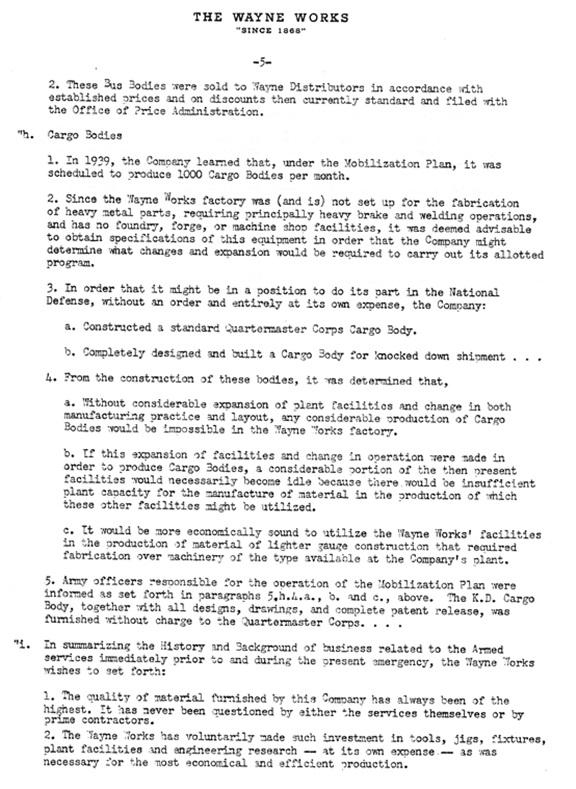
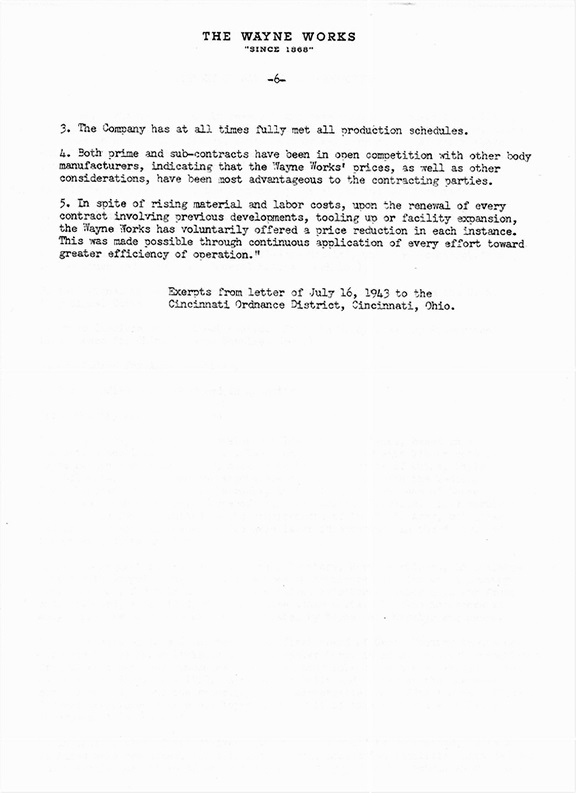
|









































